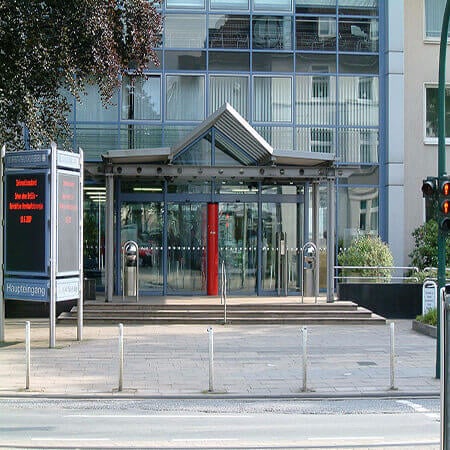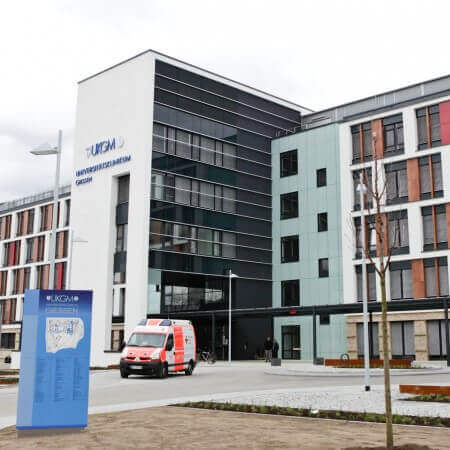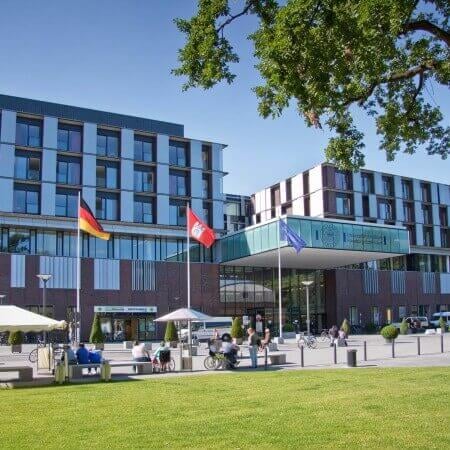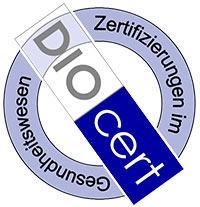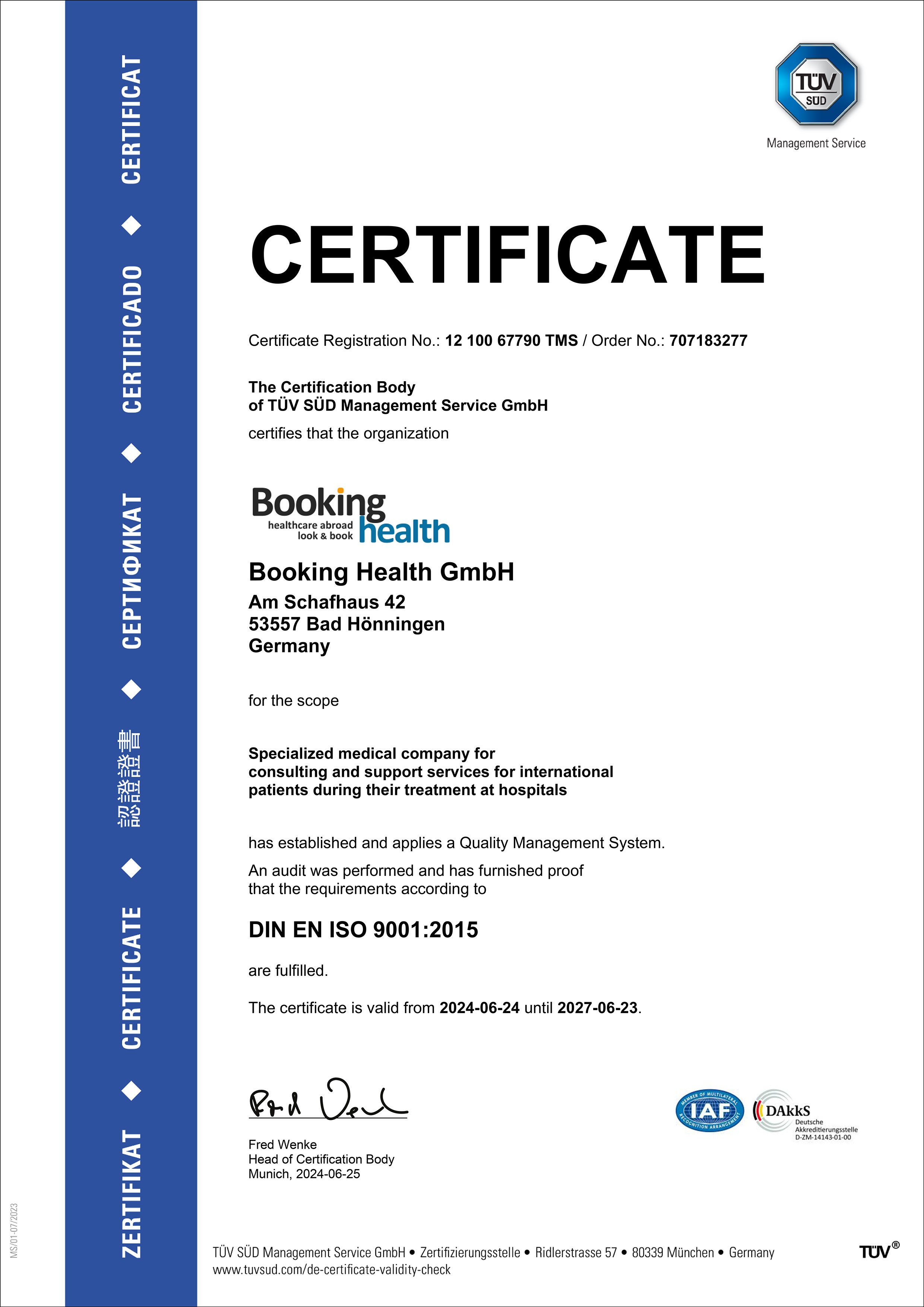About the disease
Renal artery stenosis is narrowing of one or both renal arteries which carry blood to kidneys. It is usually accompanied by reduction of renal perfusion. Also during this disease kidneys do not get enough amount of oxygen and thus kidneys are not able to filtrate all waste products anymore. Renal arterial stenosis is one of the most difficult problems in nephrology, urology and cardiology. Renal artery stenosis can develop as a result of congenital or acquired changes in arterial vessels. Such changes can lead to a significant decrease in renal blood flow and as a result a person develops nephrogenic hypertension. If not diagnosed and treated on time, renal arterial stenosis can bring such life-threatening complications, as cardiovascular failure, stroke and chronic renal failure.
Most common causes of renal artery stenosis are atherosclerosis (accounted for 65-70% cases of renal artery stenosis) and fibromuscular dysplasia (25-30%). Atherosclerotic renal artery stenosis is more common for men over 50 years old. If disease was caused by fibromuscular dysplasia it is more common in women older 30-40 years. Atherosclerosis is a condition when arteries become thick and are unable to carry blood to other organs in sufficient amount.
Symptoms
Renal arterial stenosis is manifested by renovascular hypertension and in some cases by ischemic nephropathy. Renovascular hypertension is high blood pressure caused by insufficient blood supply to kidneys. In most cases renal artery stenosis does not cause any symptoms until advanced stage. Main symptoms of this disease are hypertension and ischemic nephropathy. Hypertension of renal artery stenosis is resistant to any typical drug therapy aimed at decreasing hypertension. Other symptoms are:
- Headache
- Hot flashes
- Head becomes heavy
- Pain in eyeballs
- Memory impairment
- Sleep disorder
- Irritability
- Rapid heartbeat
- Pain in heart
- Feeling of tightness in chest
- Shortness of breath
Diagnosis
- If a doctor suspects that a person has renal arterial stenosis, he is most likely to listen for presence of any noise or murmur in upper quadrant of abdomen. If there is an increased cardiac noise or whooshing sound of blood close to kidneys, these are clear indicators of renal arterial stenosis. Such noise can be heard through stethoscope. Biochemical blood tests of kidneys and urine tests can show if there are increased levels of urea and creatinine.
- General analysis of urine also shows number of red blood cells available in kidneys.
- Renal ultrasound can reveal if there was reduction in kidney size. Doppler ultrasound and duplex scanning of renal arteries assess the stage of renal arterial stenosis. Urography shows contrast agents in kidneys. It also provides information about form, size, position of kidneys and renal function as well.
Treatment
- Angioplasty with stenting (1-2 stents) is used to widen and keep arteries open for the blood flow. According to WebMD, medical site, for this type of surgery doctor can use catheter into damaged artery to make heart valves work better.
- Endovascular balloon dilatation of renal arteries is the most common surgery for this disease. Endovascular balloon dilation also widens arteries that are adjacent to kidneys and thus blood flow normalizes once again. It is required if the size of kidneys is too small or a person suffers from high blood pressure which can not be treated with drugs
- Resection of stenotic portion of renal artery also aims to widen arteries. In some cases a surgeon inserts special device inside artery to keep it widened, if there is possibility of further narrowing in future. If this type of surgery is impossible to perform, a doctor may do bypass surgery. This means that he will change the root, which connects kidneys with heart, choosing an artery, which would bring sufficient amount of blood to kidney. Renal artery in this case can be connected to vessel from other organs, such as liver or spleen. Although this surgery is difficult to perform and it can have possible complication, it proved to be highly effective. If renal arterial stenosis was caused by nephroptosis, a person needs to undergo nephropexy. Nephropexy is a kind of surgery, when a doctor fixates floating kidney.
- Surgical treatment of renal arterial stenosis normalizes blood pressure in 70-85% of patients with fibromuscular dysplasia and 50-60% with atherosclerosis. Period of postoperative blood pressure normalization can take up to 7 months.
Authors:
This article was edited by medical experts, board-certified doctors Dr. Nadezhda Ivanisova, and Dr. Bohdan Mykhalniuk. For the treatment of the conditions referred to in the article, you must consult a doctor; the information in the article is not intended for self-medication!
Our editorial policy, which details our commitment to accuracy and transparency, is available here. Click this link to review our policies.
